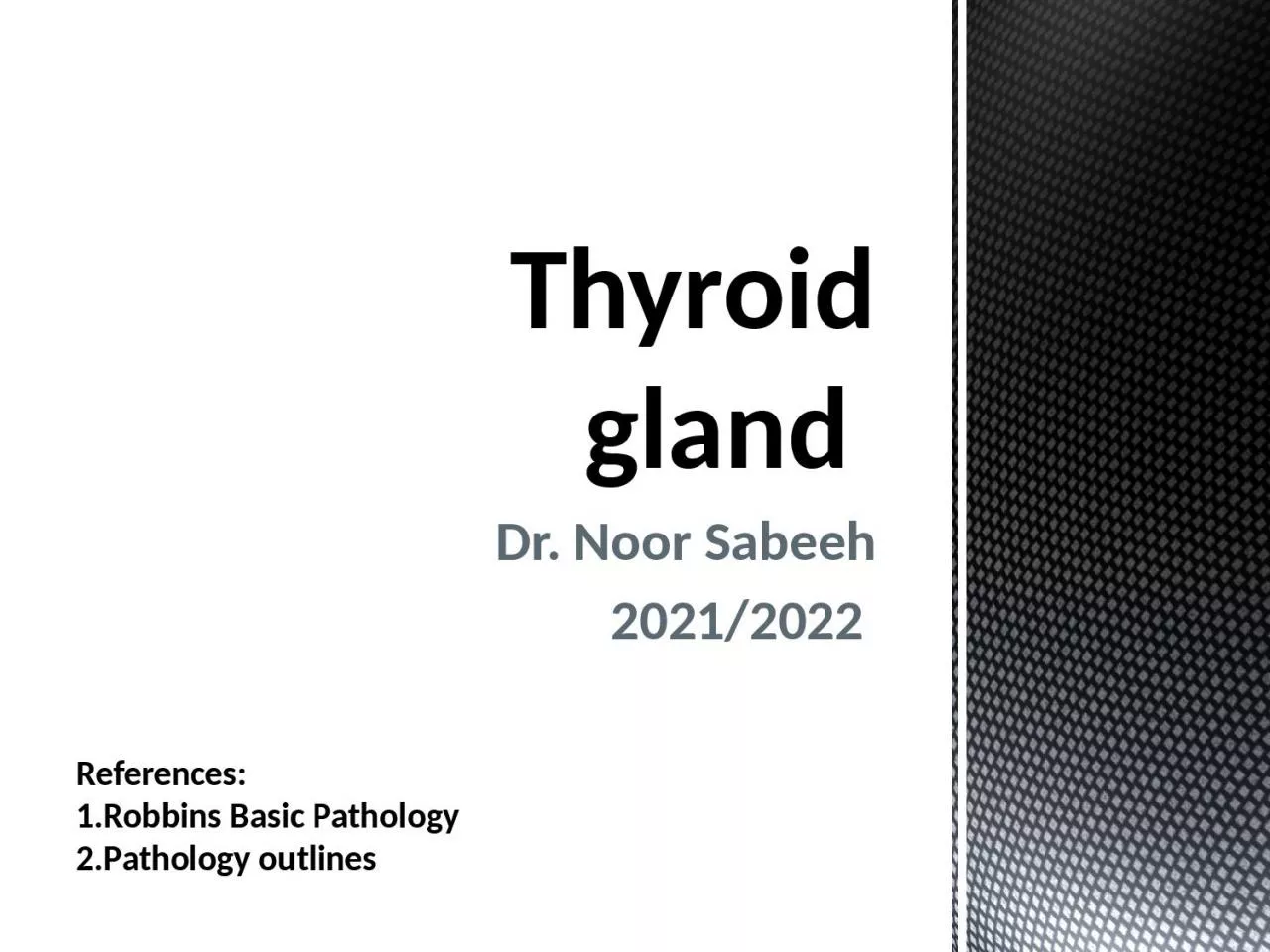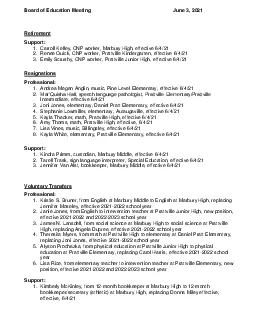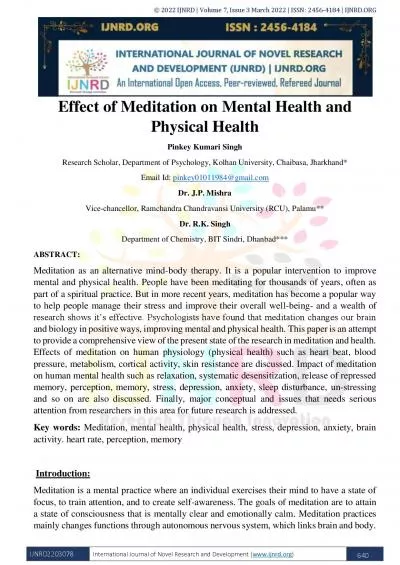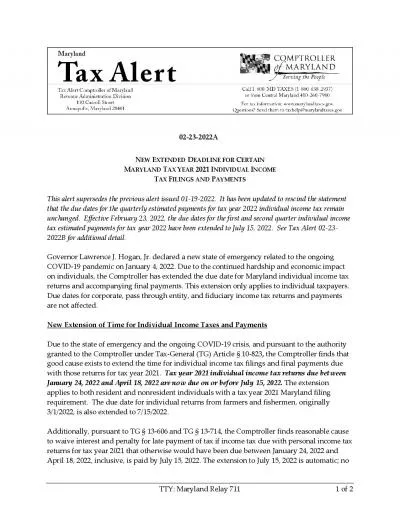PPT-Dr. Noor Sabeeh 2021/2022
Author : amber | Published Date : 2024-02-09
Thyroid gland References 1Robbins Basic Pathology 2Pathology outlines Learning objectives 1 Thyroiditis 2 Goiter 3 Neoplastic lesions of the thyroid gland Thyroid
Presentation Embed Code
Download Presentation
Download Presentation The PPT/PDF document "Dr. Noor Sabeeh 2021/2022" is the property of its rightful owner. Permission is granted to download and print the materials on this website for personal, non-commercial use only, and to display it on your personal computer provided you do not modify the materials and that you retain all copyright notices contained in the materials. By downloading content from our website, you accept the terms of this agreement.
Dr. Noor Sabeeh 2021/2022: Transcript
Thyroid gland References 1Robbins Basic Pathology 2Pathology outlines Learning objectives 1 Thyroiditis 2 Goiter 3 Neoplastic lesions of the thyroid gland Thyroid diseases Hyperthyroidism. Mein . Aahiyaan. . Noor. Poshaak. . Pehiriyam. . Insanee. , . Poshaak. . Pehiriyam. . Insanee. Na Ta . Asula. Mein . Aahiyaan. . Noor. Tada . Roop. . Muhinjo. . Anand. Mai. Hita. . Sahan. Weekend . Out(:. (With . Ashleigh and Noor. !). Just working on the computer. .. Chilling with Andy.. Enjoying a nice snack before lunch.. Mike and Mrs. Coffey. Mike decided to bring Mrs. Coffey flowers.. 15
+
1
20
13 - Last day of Summer School
2 - First day for teachers
11 - Columbus Day
6 - First day of Summer School
6 - Labor Day
7-8 - Rosh Hashanah
9 - First day for students
1 Labor DaySeptember 3 1506 2021Fall BreakOctober 4 1508 2021Veteran146s DayThanksgiving BreakNovember 24 15029 2021Winter BreakDecember 20 15031 2021MLK DayJanuary 17 2022Presidents146 DayFebruary 18 1 June 3 2021RetirementSupport1Carroll Kelley CNP worker Marbury High effective 6/4/212Renee Quick CNP worker Prattville Kindergarten effective 6/4/213Emily ScrushyCNP worker Prattville Junior Higheffec 2021-2022STUDENT PK-12 Survey 1 Survey Week July 12-16 2021Due Date July 30 2021State Processing July 26September 10 2021Final Update/Amendment Date September 30 2021Survey 8 State Processing July 19- (Excerpt for AAE 320). . . Tri-State Agricultural Lenders Seminar. Dr. Paul D. Mitchell. Director of the Renk . AgriBusiness. Institute. Professor of Agricultural and Applied Economics. Extension State Specialist in Cropping Systems Management. Koden. -TI). Slide . 1. TGbc. Closing Report. Date:. 2022-01-21. Authors:. January 2022. Marc Emmelmann (. Koden. -TI). Slide . 2. Abstract. Closing report for IEEE 802.11 . TGbc. (Broadcast Services) for January 2022.. 2456
-
4184 | IJNRD.ORG
IJNRD2203078
International Journal of Novel Research and Development (
www.ijnrd.org
)
640
Effect of Meditation on Mental Health and
Physical Health
Pinkey Kumari Singh
Resear 2022AEW XTENDED EADLINE FOR ERTAINARYLANDAX EAR 2021NDIVIDUAL
New Extension of Time for Individual Income Taxes and Payments
Due to the state of emergency and the ongoing COVID19 crisis, and pursuant [EBOOK] Academic Planner 2021-2022: With Weekly and Monthly Spreads, July 2021 to June 2022
http://skymetrix.xyz/?book=B091WL6BQT Compensation . and Productivity Survey Results. October 27, 2022. Webinar Housekeeping. Today’s presentation is being recorded – The links to the view the recording and download the presentation on-demand will be shared with all participants. Webinar links will also be posted on AMGA’s website within the next few days.. Plantation project in . Gurgoan. , . Noida, Pune, Bangalore, Chennai, . Coimbatore . & . Hyderabad. 01. 02. 03. 04. 05. 06. TABLE OF . CONTENTS. EXECUTIVE. SUMMARY. OBJECTIVES. STATUS UPDATE. PICTURES FROM THE GROUND. by Adrian Andreassi, Village Council Chair. FINANCIAL MANAGEMENT. Successful FY21 audit by LSWG -- the Village’s net position increased by $214,309 and the Village’s fund balance increased by $285,398. .
Download Document
Here is the link to download the presentation.
"Dr. Noor Sabeeh 2021/2022"The content belongs to its owner. You may download and print it for personal use, without modification, and keep all copyright notices. By downloading, you agree to these terms.
Related Documents











![[EBOOK] Academic Planner 2021-2022: With Weekly and Monthly Spreads, July 2021 to June](https://thumbs.docslides.com/1005542/ebook-academic-planner-2021-2022-with-weekly-and-monthly-spreads-july-2021-to-june-2022.jpg)


